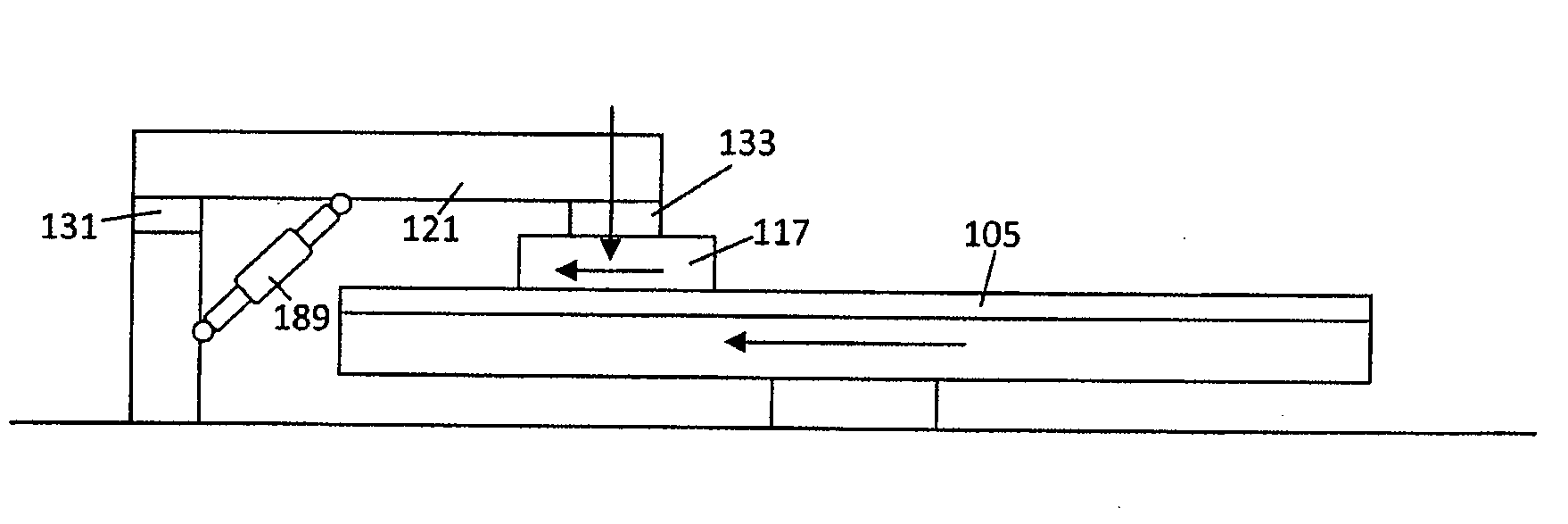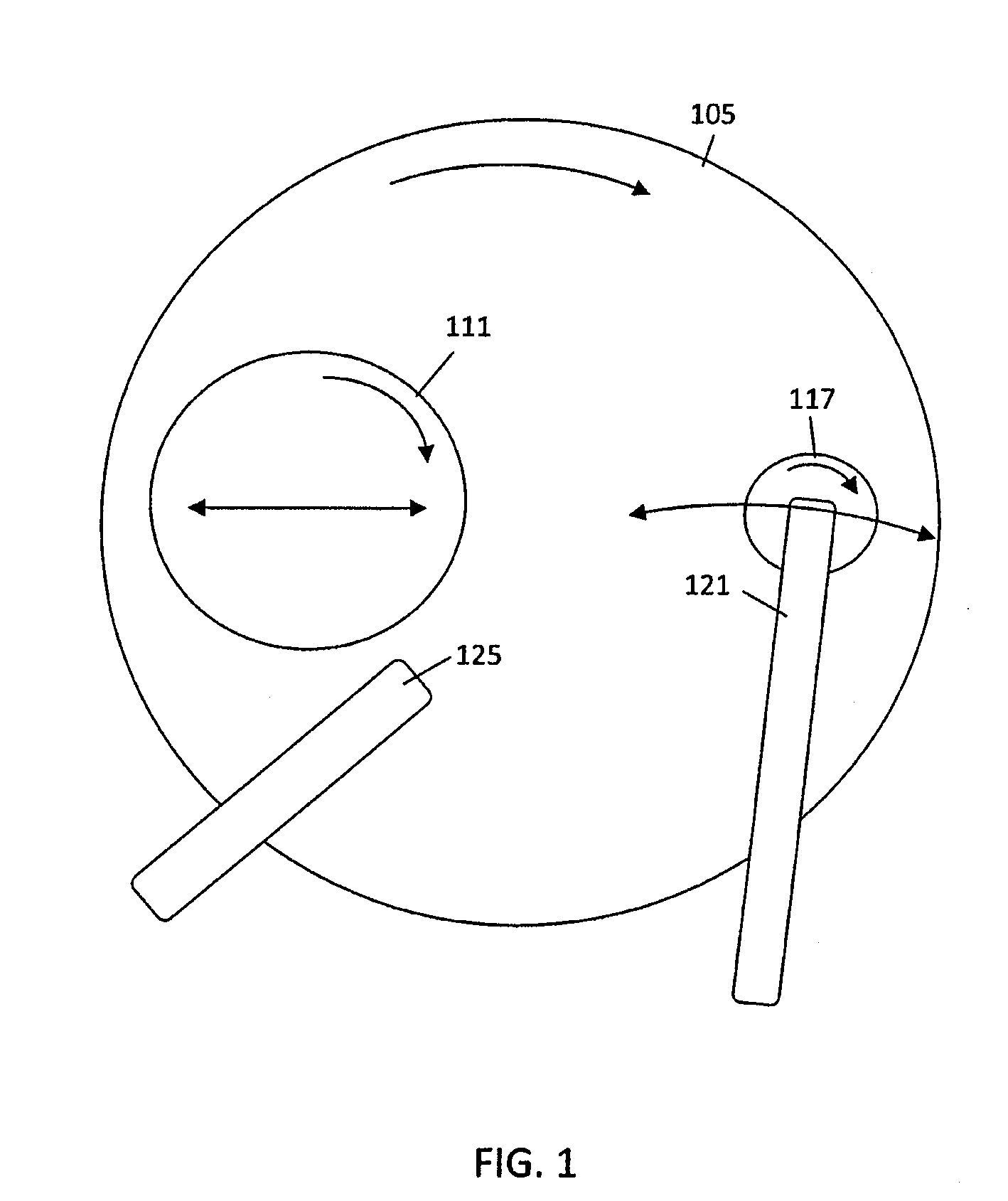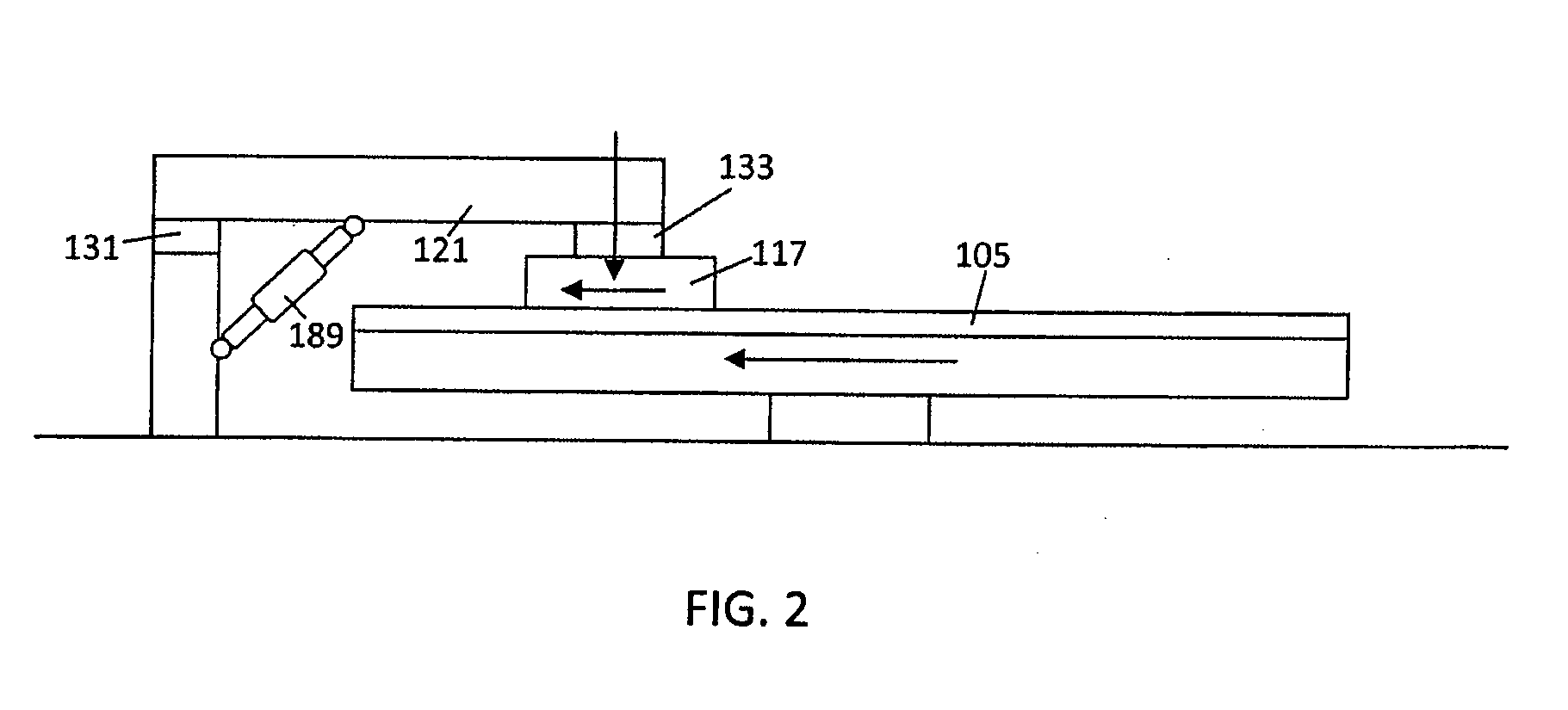In-situ performance prediction of pad conditioning disk by closed loop torque monitoring
- Summary
- Abstract
- Description
- Claims
- Application Information
AI Technical Summary
Benefits of technology
Problems solved by technology
Method used
Image
Examples
Embodiment Construction
[0017]The present invention is directed towards an improved apparatus and method for optimizing the processing life of a CMP polishing pad. The inventive system detects the magnitude of the torque forces applied to the conditioning disk to condition the polishing pad and adjusts the operation of the conditioning disk to optimize the performance and life of the polishing pad. With reference to FIG. 1, a preferred embodiment of the CMP system includes a rotating circular polishing pad 105, a wafer carrier mechanism 111, a conditioning disk 117 and a conditioning disk arm. During CMP processing, abrasive slurry is poured onto the polishing pad 105 by a slurry distribution mechanism 125. The wafer carrier mechanism 111 rotates and moves the wafer over the slurry and across the width of the rotating polishing pad 105. The conditioning disk 117 has an abrasive surface that contacts the polishing pad 105 and removes wafer particles from the polishing surface. The conditioning disk 117 is s...
PUM
| Property | Measurement | Unit |
|---|---|---|
| Time | aaaaa | aaaaa |
| Force | aaaaa | aaaaa |
| Torque | aaaaa | aaaaa |
Abstract
Description
Claims
Application Information
 Login to View More
Login to View More - R&D
- Intellectual Property
- Life Sciences
- Materials
- Tech Scout
- Unparalleled Data Quality
- Higher Quality Content
- 60% Fewer Hallucinations
Browse by: Latest US Patents, China's latest patents, Technical Efficacy Thesaurus, Application Domain, Technology Topic, Popular Technical Reports.
© 2025 PatSnap. All rights reserved.Legal|Privacy policy|Modern Slavery Act Transparency Statement|Sitemap|About US| Contact US: help@patsnap.com



